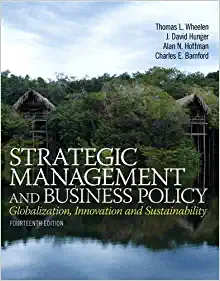Question
Part A. Multiple Choice Questions: 1 . The law of one price a)is an economic hypothesis postulating that in the absence of transaction barriers, the
Part A. Multiple Choice Questions:
1 .The law of one price
a)is an economic hypothesis postulating that in the absence of transaction barriers, the price of a product would equalize across trading countries when measured in a common currency.
b)is an economic hypothesis postulating that the price of a broad basket of products would always equalize across trading countries when measured in a common currency.
c)is an economic hypothesis postulating that the relative price of a broad basket of products in two trading countries, measured in a common currency, is a constant.
d)is a law that the European Union imposes on its member countries.
e)is a law that designed to prohibit price discrimination.
2.Which one of the following may help explain the observed deviations from purchasing power parity (PPP) among the currencies of different countries?
a)Differences in regulations and taxes across countries.
b)Market imperfections that hinder trade across countries.
c)Tariffs and transportation costs across countries.
d)All of the above.
e)None of the above.
3.The relative purchasing power parity (PPP) hypothesis
a)is fully supported by data.
b)is generally not supported by data.
c)holds among countries that share a common border.
d)holds among countries that share a common currency.
4.In the wake of the COVID-19 pandemic, firms seem to be investing in new technologies and reallocating labor in ways that raise the productivity of tradables much more than nontradables. This is unlikely to be a short-term phenomenon. The extent and significance of this effect vary across countries. Some countries are experiencing larger increases in the relative productivity of tradables vs. nontradables than others. As a result of this phenomenon, in the long run, we should expect the currencies in countries with greater relative productivity gain in tradables to
a)remain unchanged relative to currencies of other countries.
b)appreciate or depreciate depending on the situation.
c)appreciate relative to currencies of other countries.
d)depreciate relative to currencies of other countries.
5.Chile had tried to expand its exports by channeling a great deal of its fiscal and financial resources to raise the productivity of its export-oriented industries. This policy left limited resources for investment and productivity growth in the non-tradable sector of the economy. Over the years. such a policy is likely to have
a)raised both exports and the real exchange rate in the long run.
b)raised exports while lowering the real exchange rate, in the long run.
c)lowered both exports and the real exchange rate in the long run.
d)lowered exports while raising the real exchange rate in the long run.
e)had no net effect on exports and the real exchange rate in the long run.
6. In 2006, Petrobras, Brazil's major oil company, announced the discovery of significant oil reserves off the country's coast. Before long, it started to extract the oil and provide large windfall tax revenues for the government. The windfall enabled the government of Brazil to increase its expenditure in the economy by a significant amount in the late 2000s and beyond. Over the years following the jump in production of oil, this expenditure increase
a)could not have affected the real exchange rate of the Brazilian currency.
b)must have caused the real exchange rate of the Brazilian currency to appreciate.
c)must have caused the real exchange rate of the Brazilian currency to depreciate.
d)may have caused the real exchange rate of the Brazilian currency to appreciate or depreciate.
Step by Step Solution
There are 3 Steps involved in it
Step: 1

Get Instant Access to Expert-Tailored Solutions
See step-by-step solutions with expert insights and AI powered tools for academic success
Step: 2

Step: 3

Ace Your Homework with AI
Get the answers you need in no time with our AI-driven, step-by-step assistance
Get Started


